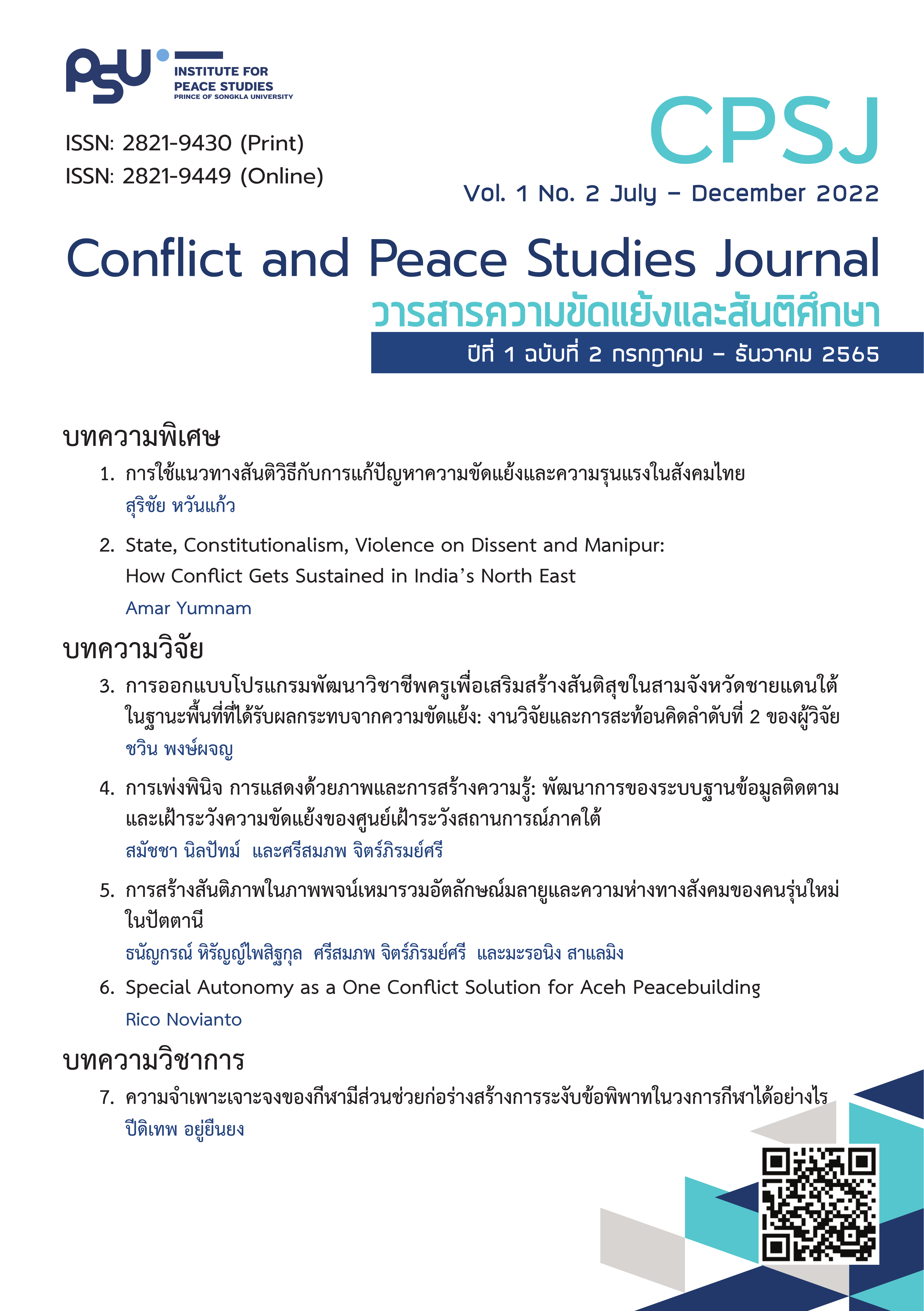Special Autonomy as a One Conflict Solution for Aceh Peacebuilding
Main Article Content
Abstract
This article examines the initiatives taken by the governments of Aceh and Indonesia to create a Special Autonomy following the signing of the Helsinki Memorandum of Understanding in August 2005. Systematic examinations of pertinent books,
articles, interviews, and documents pertaining to the Government of Indonesia's (GOI) policy throughout the past fifteen years. The Indonesian legal system, as outlined in Act No. 11 of 2006 on the Governance of Aceh, governs special autonomy in Aceh as one of its peacebuilding initiatives. The political sector in Aceh’s local government makes sure that the chance to conduct local elections in a separate stream has been properly utilized. Seven of the 19 candidates in the three gubernatorial elections ran as independents. After the Helsinki MoU, Aceh now has its own political structure, but for peace to persist, the administration needs to be improved.
Article Details
References
Aspinall, E. (2002). Modernity, History and Ethnicity: Indonesian and Acehnese Nationalism in Conflict. Review of Indonesian and Malaysian Affairs, 36.
Aspinall, E., & Crouch, H. (2003). The Aceh Peace Process: Why It Failed, East West Center. Washington DC.
Awaluddin, H. (2009). Peace in Aceh: Notes on the peace process between the Republic of Indonesia and the Aceh Freedom Movement (GAM) in Helsinki. CSIS Jakarta.
Bell, C. (2001). Peace Agreement and Human Rights, Oxford University Press, Oxford.
Djul, M. Nur i, & Rahman, N. (2008). Perundingan Helsinki: sebuah perspektif dari juru runding Gerakan Aceh Merdeka. In Aguswandi & Large, Judith. (ed.). Accord: rekonfigurasi politik proses damai Aceh. London: Conciliation Resources Publication.
Galtung, J. (2000). Conflict Transformation by Peaceful Means (The Transcend Method). United Nation Disaster Management Training Programme.
Hillman, B. (2012). Power-sharing and political party engineering in conflict prone societies: the Indonesian experiment in Aceh. Conflict, Security & Development, 12(2), 149-169.
Hofman, B., Rodrick-Jones, E., & Thee, K. W. (2004). Indonesia: Rapid Growth, Weak Institutions. World Bank.
Kadir, M. A. (2012). Negotiating Aceh Self-determination in Indonesia’s Unitary System: A Study on Peace Agreement Helsinki Memorandum of Understanding 2005. Aceh International Journal of Social Science, 1(2), 1-15.
Korth, S. (2011). Highlights of the 2010 dialogue series. In The role of elections in peace processes: when and how the advance stability or exacerbate conflicts. United Nations System Staff College (UNSSC). Italy.
Kingsbury, D. (2006) Peace in Aceh: A Personal Account of the Helsinki Peace Process. Singapore: Ecolnox Publishing Asia.
Mietzner, M. (2007). Local Elections and Autonomy in Papua and Aceh: Mitigating or Fueling Secessionism? Cornell University Southeast Asia Program. 84.
Miller, M. A., & Bunnell, T. (2010). Urban Rural Connections: Banda Aceh through Conflict, Tsunami and Decentralization. National University of Singapore.
Perez, J. G. (2009). Lessons of peace in Aceh: administrative decentralization political freedom as a strategy of pacification in Aceh. ICIP Working Papers: International Catalan Institute for Peace.
World Bank. (2009). GAM Reintegration Needs Assessment: Enhancing Peace through Community-level Development Programming. Jakarta: World Bank.
World Bank. (2006). Village Survey in Aceh: An Assessment of Village Infrastructure and Social Conditions. Jakarta: The World Bank.

